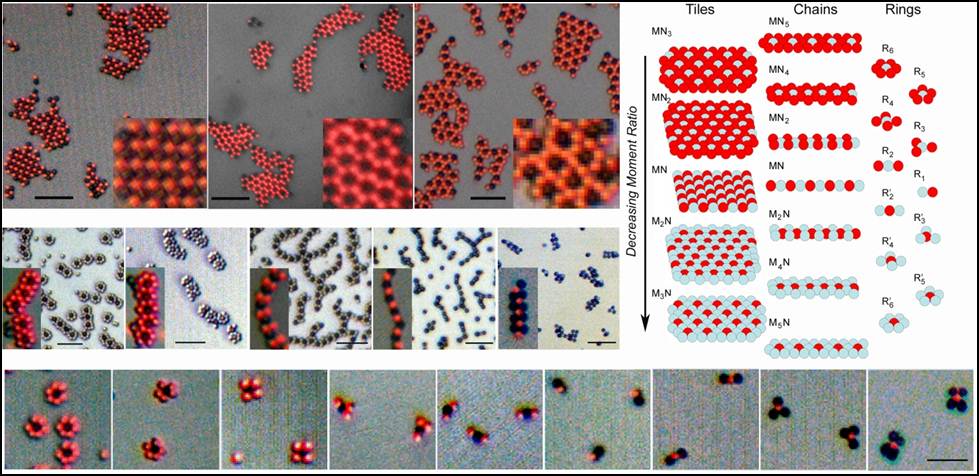Assembling microscopic particles
into macroscopic structures can open new pathways for producing complex
materials that cannot be produced by lithographic methods.
Although
several methods for assembling colloidal particles exist, including controlled
drying, ionic interactions, and dipolar interactions, a general pathway for
producing a wider variety of structures remains a fundamental challenge. Here a versatile colloidal assembly system is
demonstrated in which the design rules can be tuned to yield over 20 different
pre-programmed structures, including kagome,
honeycomb, square tiles, and various chain and ring configurations. The assembled structures are tuned by
controlling the relative concentrations and interaction strengths between
spherical magnetic and non-magnetic beads, which behave as paramagnetic or
diamagnetic dipoles when immersed in a ferrofluid. A comparison of our experimental observations
with potential energy calculations suggest that the lowest energy configuration
within binary mixtures is determined entirely by two parameters, namely the
relative dipole strengths and their relative concentrations. The enhanced flexibility enabled by tunable Ising
interactions within colloidal particle systems makes this work relevant not
only to the exploration of fundamental problems in materials science and soft
matter, but also to the bottom-up fabrication of photonic, phononic, and
magnetic devices.
